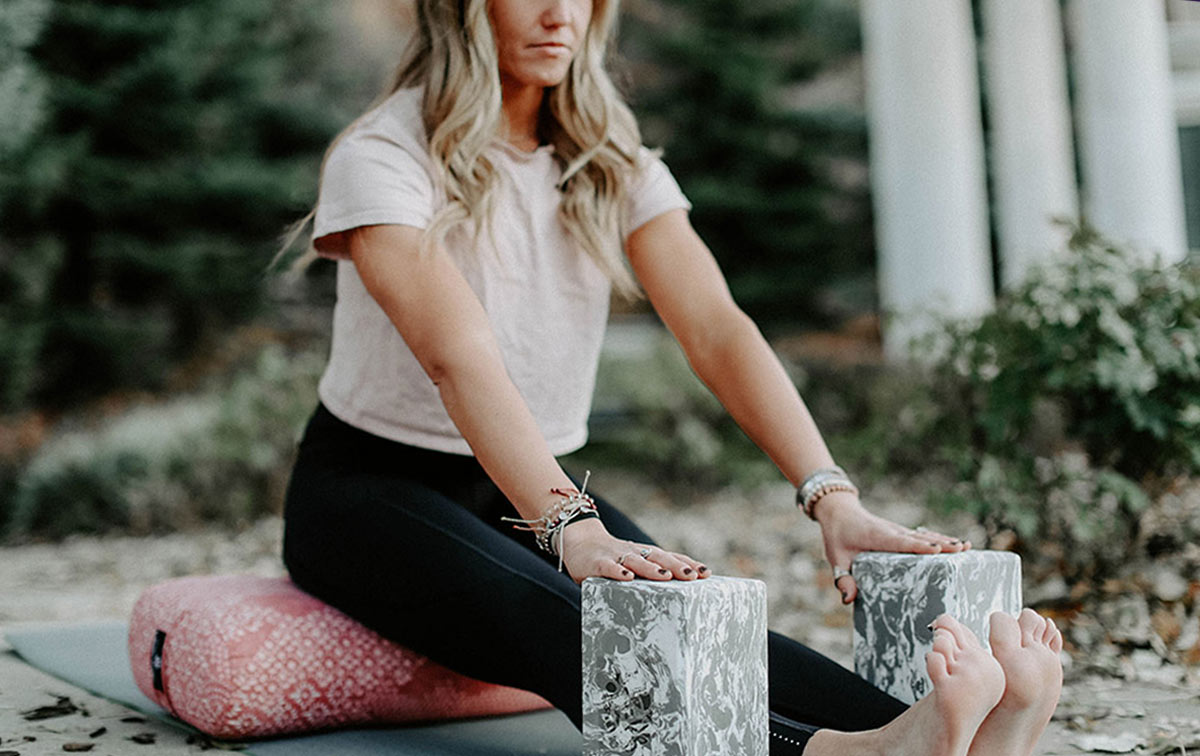
Before I began teaching yoga, I assisted in classes for about four years. My job was to walk around the room and make adjustments while the teachers taught and demonstrated poses. There were quite a few athletic types in the class—competitive skiers, marathon runners, climbers, bike racers, Wasatch 100 alumni, etc.
A few of these athletically accomplished students approached their yoga practice with the same zeal as their other physical pursuits. One student in particular almost always sported a beet-red face and popped-out veins on his forehead while he practiced even the mellowest of yoga asanas. My job was to remind him to chill.
In competitive sports, challenging one’s edge is part of the training process. However, yoga asana comes from a completely different paradigm. The purpose is not to “progress” in the sense of moving further and further into poses. This is partly because there is a limit to how far you can push your joints before causing damage. But more important, it’s because asana is part of a system that promotes presence, ease and contentment. The desire to constantly go further is counterproductive to these intentions.
However, there is such a thing as an “edge” where you can explore your yoga postures. It’s not the same as the edge you might challenge when you’re planning on running a marathon. The edge we play in asana practice is what I call the “intelligent” or “compassionate” edge. Rather than moving to the place where the body can move no further, we explore at the edge where we feel a moderate stretch, but we can still breathe deeply and relax into the pose.
Your Intelligent Edge: From Doing to Being
If I could choose just one instruction to give to yoga practitioners, it would be to relax and breathe deeply into the pose you’re in. There’s no pose out there in the future—or for some of us who have practiced for decades, in the past—that’s more important than the one you’re currently practicing. The pose you’re in at a given moment is the only one that matters. And the process is to relax into this asana, right now, so that rather than “doing” the pose, you are “being” the pose. You’re absorbed in the internal process rather than the concept of what you think the pose should be.
Props such as yoga blocks, yoga straps, yoga bolsters and yoga blankets are an important ally for this type of practice. They can help us relax more deeply into our intelligent edge. Use them liberally to help you move from forceful practice to simple presence.
So instead of going to our competitive edge, where we can move no further, we practice at an edge where we can breathe deeply and feel the natural oscillation of the body with each inhalation and exhalation. When we practice this way, we are partnering with our bodies rather than inflicting poses on them. The process is very simple. We move into the shape of a pose, and we stop at the place where we begin to feel a moderate challenge. Then we breathe deeply, keeping awareness inside the body, and relax more deeply into the pose with each breath.
Asana is a process. The proliferation of photos of people practicing insane-looking poses notwithstanding, the perfectly performed pose we can see from the outside is not the point. Our presence with the unfolding process that is asana is where the “juice” of the practice lies. Find your intelligent edge; relax and breathe; become the process of unfolding.
